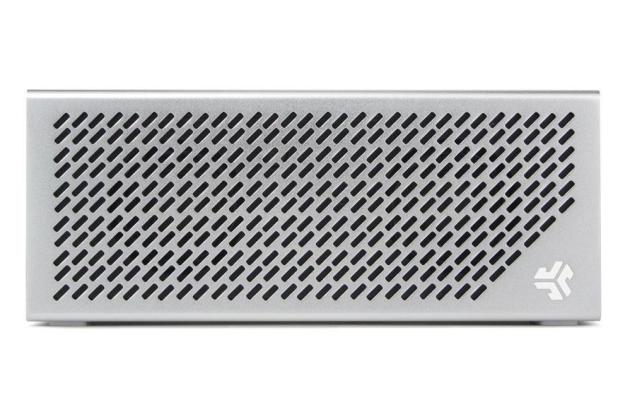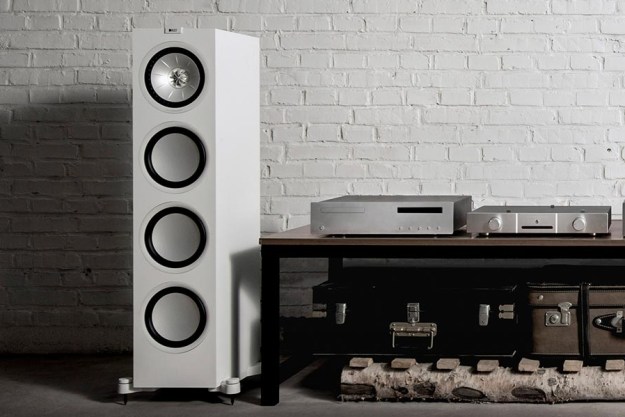
“We had a lot of fun with this little guy. Overall, we think it’s a worthy, affordable choice.”
- Balanced sound
- Wealth of features
- Poor hands free calling
- Poor sound on more complex songs
This product was reviewed as a portion of a bluetooth speaker round-up.
Our final speaker, the JBL Crasher, walks away with the Best Bang for the Buck award. We had a lot of fun with this little guy. For two-thirds the price of the Braven, it was a close competitor, coming up just a tiny bit short in sound and build quality.
Though not quite as loud or as warm in the midrange as the Braven, the Crasher delivered a balanced sound that was especially well-suited to acoustic music. Like the Braven, its 2-inch drivers are matched by passive “subwoofers” at the back, which help to round out the lower mids.
For much of our listening session, we found it tough to pick a clear winner between the Crasher and the Braven – much of the difference was simply subjective preference. The only significant issue came when we listened to more complex productions, where the Crasher tended to be a bit boxy, adding a slightly metallic sheen over the music.
Hands free calling was the Crasher’s weakest point. Incoming call quality tended to be cloudy, and our conversational counterparts had trouble hearing us through the microphone. Still the unit offers quality sound and a wealth of features including a quoted 18-hour battery life, a USB port for phone charging, aux input, and a carrying case, all for $100.
In the JLab tradition, the Crasher is also available in several color patterns, including an audacious bright purple and green version. Overall, we think it’s a worthy, affordable choice.
Highs:
- Balanced sound
- Wealth of features
Lows:
- Poor hands free calling
- Poor sound on more complex songs
Editors' Recommendations
- Bose has a bigger Bluetooth speaker to power your next pool party
- Sony’s ULT Power Sound headphones and speakers go big on powerful bass
- Best wireless speakers for 2024: Sonos, JBL, KEF, and more
- The best Bluetooth speakers for 2024: Marshall, Soundcore, JBL, and more
- Best bookshelf speakers of 2024: from passive to powered and for every budget


